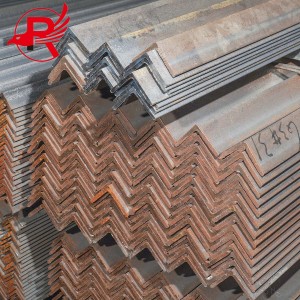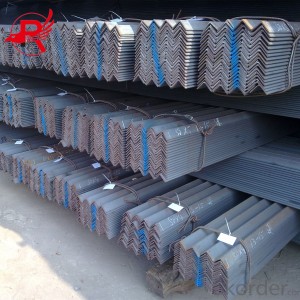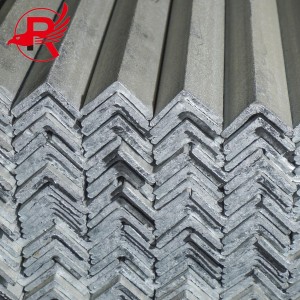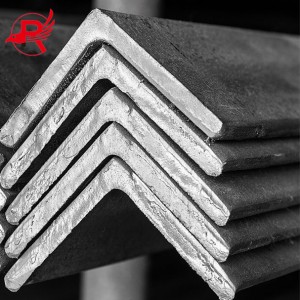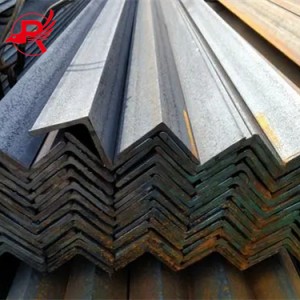Angle steel ASTM Low-carbon Angle steel galvanized iron Angle steel
PRODUCT PRODUCTION PROCESS
The production process of angle steel usually includes the following steps:
Material preparation: Select steel plate materials that meet the requirements, usually hot-rolled or cold-rolled steel plates, and select materials according to design requirements and standards.
Cutting: Cut the steel plate according to the design requirements to obtain a steel plate blank that meets the length requirements.
Heating: Send the cut steel plate blank into the heating furnace for preheating treatment to improve the plasticity and processing performance of the material.
Cold bending forming: The preheated steel plate blank is sent to the cold bending forming machine for forming processing. Through processes such as rolling and bending, the steel plate is cold-bent into the cross-sectional shape of unequal angle steel.
Cutting to length: Cut the cold-formed unequal angle steel according to the design requirements to obtain unequal angle steel products that meet the length and size requirements.
Leveling and straightening: Level and straighten the cut unequal angle steel to ensure the straightness and dimensional accuracy of the product.
Surface treatment: Surface treatment of unequal angle steel, such as rust removal, painting, etc., to improve its anti-corrosion performance.
Inspection: Conduct quality inspection on the produced unequal angle steel, including inspection of appearance quality, dimensional deviation, etc.
Packaging and leaving the factory: Pack the qualified unequal angle steel, label the product information, and store it in the factory.
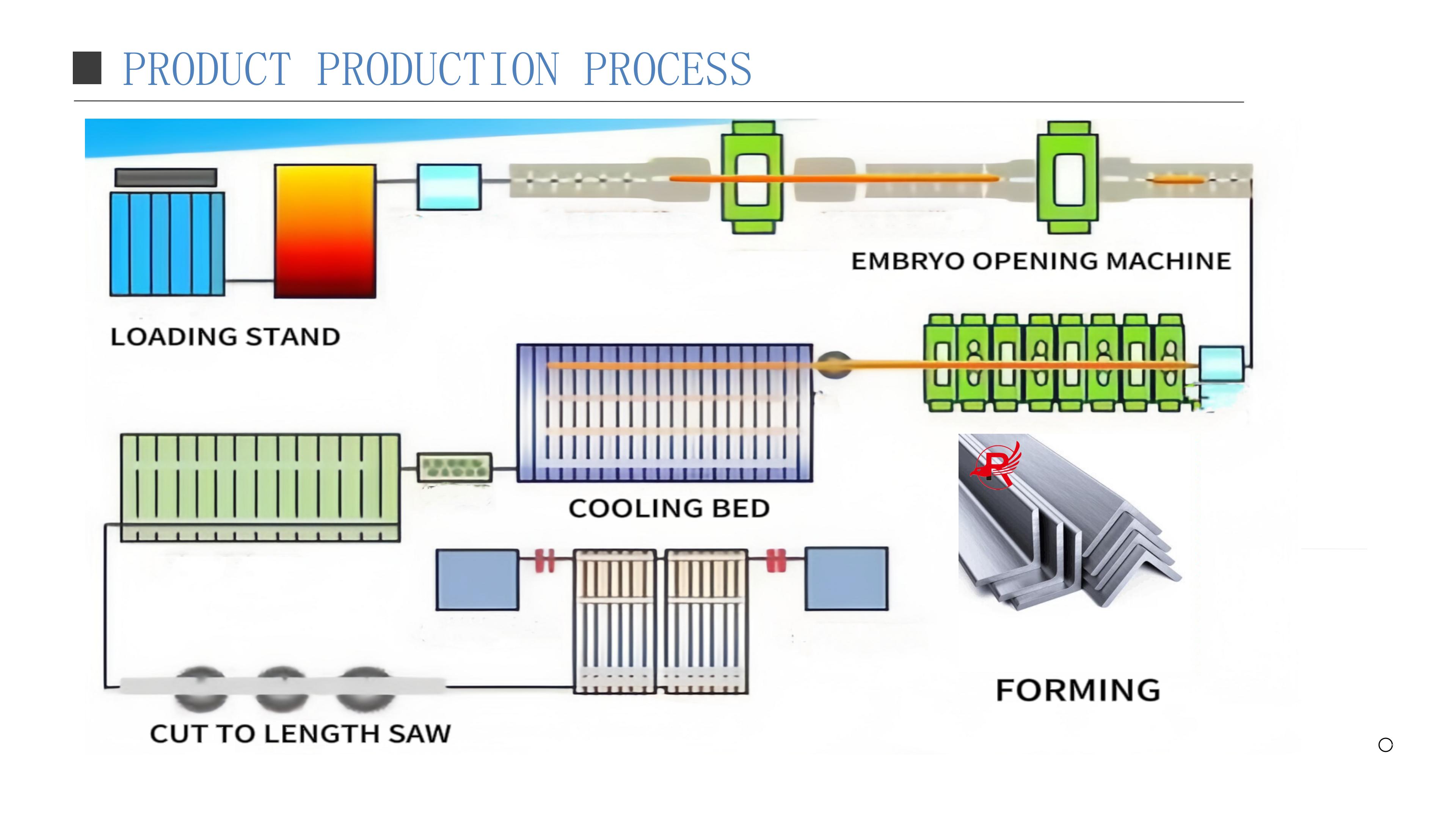
Product Detail
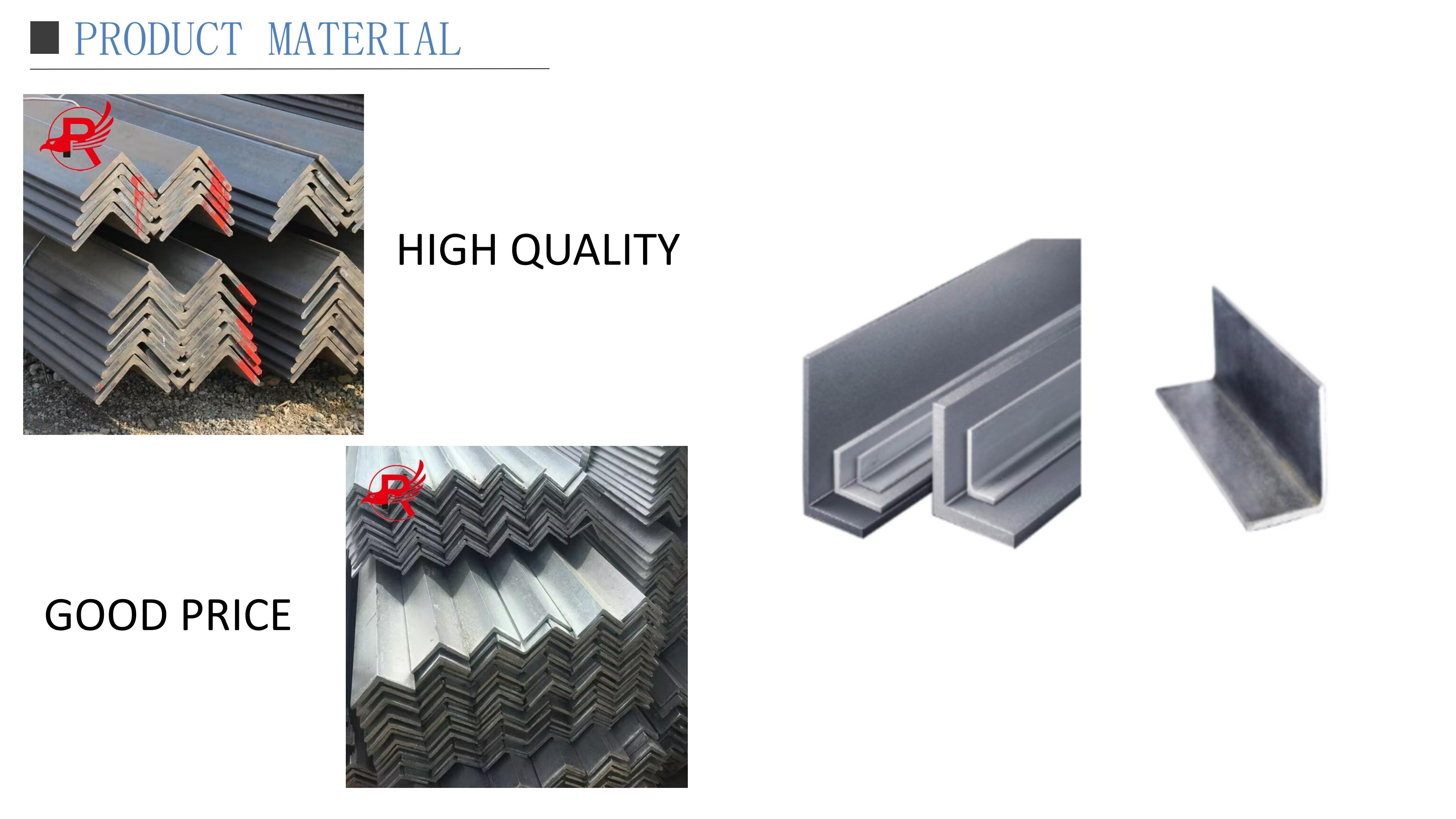
Equal and unequal carbon steel angle bars are common structural steel components used in construction, manufacturing, and engineering projects. Both types are L-shaped and made from carbon steel, but they differ in the dimensions of their legs.
- Equal angle bars have both legs of equal length, forming a 90-degree angle. They are used in applications where a right-angle structure is required, such as frames, supports, and reinforcements.
- Unequal angle bars have one leg longer than the other, resulting in a non-90-degree angle. They are suitable for applications where a varying support structure or specific load-bearing requirements exist.
Both types of angle bars are available in standard dimensions and are often utilized for framing, bracing, and support in various construction and industrial settings. They can be easily welded, machined, and customized to meet specific project needs. Additionally, their carbon steel composition provides strength and durability for structural applications.
|
item
|
value
|
|
Standard
|
ASTM, AiSi, DIN, EN, GB, JIS
|
|
Place of Origin
|
China
|
|
Type
|
Equal and Unequal angle bar
|
|
Application
|
structure、Industrial building、Industry/Chemical Equipment/Kitchen
|
|
Tolerance
|
±3%
|
|
Processing Service
|
Bending, Welding, Punching, Decoiling, Cutting
|
|
Alloy Or Not
|
Non-Alloy
|
|
thickness
|
0.5mm-10mm
|
|
Delivery Time
|
8-14 days
|
|
Product name
|
Hot Rolled Steel Angle Bar
|
|
Processing Service
|
Cutting
|
|
Shape
|
Equal Unequal
|
|
MOQ
|
1 Ton
|
|
Material
|
Q235/Q345/SS400/ST37-2/ST52/Q420/Q460/S235JR
|
|
Length
|
6m-12m
|
|
PRICE TERM
|
CIF CFR FOB EX-WORK
|
|
Packing
|
Standard Packing
|
|
Keywords
|
Angel Steel Bar
|
| Equal angle steel | |||||||
| Size | Weight | Size | Weight | Size | Weight | Size | Weight |
| (MM) | (KG/M) | (MM) | (KG/M) | (MM) | (KG/M) | (MM) | (KG/M) |
| 20*3 | 0.889 | 56*3 | 2.648 | 80*7 | 8.525 | 12*10 | 19.133 |
| 20*4 | 1.145 | 56*4 | 3.489 | 80*8 | 9.658 | 125*12 | 22.696 |
| 25*3 | 1.124 | 56*5 | 4.337 | 80*10 | 11.874 | 12*14 | 26.193 |
| 25*4 | 1.459 | 56*6 | 5.168 | 90*6 | 8.35 | 140*10 | 21.488 |
| 30*3 | 1.373 | 63*4 | 3.907 | 90*7 | 9.656 | 140*12 | 25.522 |
| 30*4 | 1.786 | 63*5 | 4.822 | 90*8 | 10.946 | 140*14 | 29.49 |
| 36*3 | 1.656 | 63*6 | 5.721 | 90*10 | 13.476 | 140*16 | 33.393 |
| 36*4 | 2.163 | 63*8 | 7.469 | 90*12 | 15.94 | 160*10 | 24.729 |
| 36*5 | 2.654 | 63*10 | 9.151 | 100*6 | 9.366 | 160*12 | 29.391 |
| 40*2.5 | 2.306 | 70*4 | 4.372 | 100*7 | 10.83 | 160*14 | 33.987 |
| 40*3 | 1.852 | 70*5 | 5.697 | 100*8 | 12.276 | 160*16 | 38.518 |
| 40*4 | 2.422 | 70*6 | 6.406 | 100*10 | 15.12 | 180*12 | 33.159 |
| 40*5 | 2.976 | 70*7 | 7.398 | 100*12 | 17.898 | 180*14 | 38.383 |
| 45*3 | 2.088 | 70*8 | 8.373 | 100*14 | 20.611 | 180*16 | 43.542 |
| 45*4 | 2.736 | 75*5 | 5.818 | 100*16 | 23.257 | 180*18 | 48.634 |
| 45*5 | 3.369 | 75*6 | 6.905 | 110*7 | 11.928 | 200*14 | 42.894 |
| 45*6 | 3.985 | 75*7 | 7.976 | 110*8 | 13.532 | 200*16 | 48.68 |
| 50*3 | 2.332 | 75*8 | 9.03 | 110*10 | 16.69 | 200*18 | 54.401 |
| 50*4 | 3.059 | 75*10 | 11.089 | 110*12 | 19.782 | 200*20 | 60.056 |
| 50*5 | 3.77 | 80*5 | 6.211 | 110*14 | 22.809 | 200*24 | 71.168 |
| 50*6 | 4.456 | 80*6 | 7.376 | 125*8 | 15.504 | ||
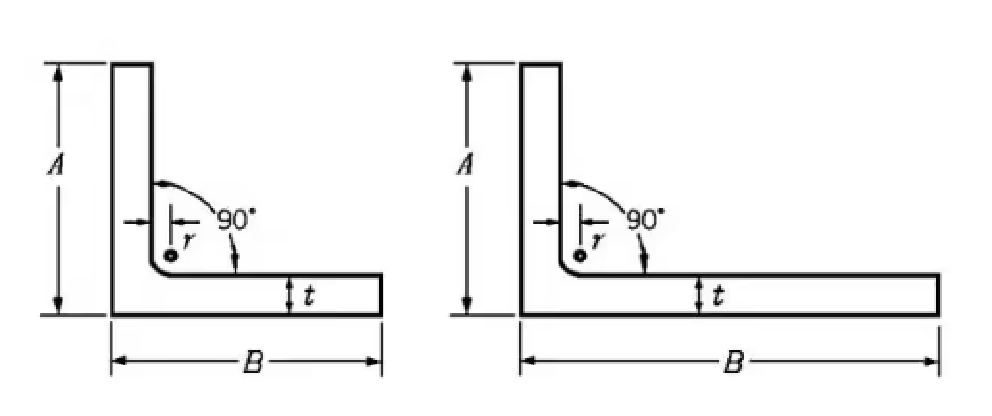
ASTM Equal Angle Steel
Grade:A36、A709、A572
Size:20x20mm-250x250mm
Standard:ASTM A36/A6M-14
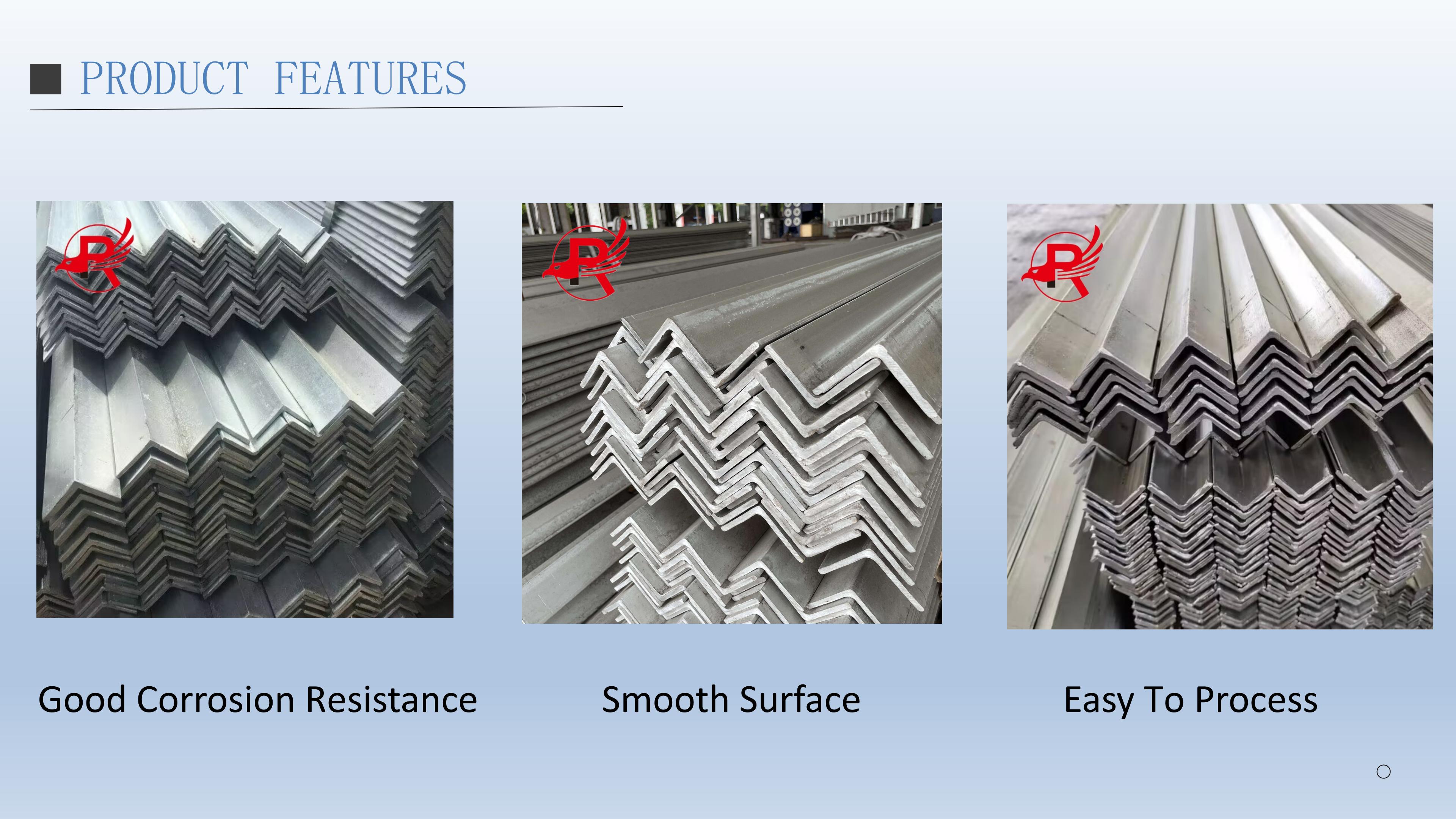

Features
Mild equal angle steel bars, also known as angle iron or L-shaped steel, are commonly used in construction and industrial applications due to their versatility and structural properties. Some key features of mild equal angle steel bars include:
Right Angle: These bars have equal length legs, meeting at a 90-degree angle, which makes them suitable for framing, bracing, and supporting structures.
Strength: Made from mild steel, these bars provide good strength and rigidity, making them suitable for load-bearing applications.
Weldability: Mild steel equal angle bars are easily weldable, allowing for versatility in fabrication and construction projects.
Machinability: They can be machined and cut to specific lengths and angles to suit the requirements of a particular project.
Corrosion Resistance: Mild steel can be susceptible to corrosion, so appropriate protective coatings or treatments may be required in certain environments.
Versatility: These bars are used in a variety of applications including building frames, supports, reinforcements, and as structural components in a wide range of industries.

Application
Versatile applications: Equal angle bars are utilized in a wide range of applications, including:
Structural support in building and infrastructure construction, such as framing, bracing, and support members.
Framework and reinforcement in fabrication and manufacturing processes, including machinery, equipment, and storage systems.
Architectural elements in building design, such as support brackets, corner guards, and decorative trim.
Machinability and weldability: Equal angle bars are often easily machined, cut, and welded to adapt to specific design and installation requirements. This versatility makes them suitable for various custom fabrication needs.
Strength and load-bearing capabilities: The symmetrical shape and sturdy construction of equal angle bars make them capable of bearing significant loads and providing structural stability in different applications.
Surface finish and coatings: Depending on the material and application, equal angle bars may be available with various surface finishes, such as mill finish or protective coatings to enhance durability and corrosion resistance.
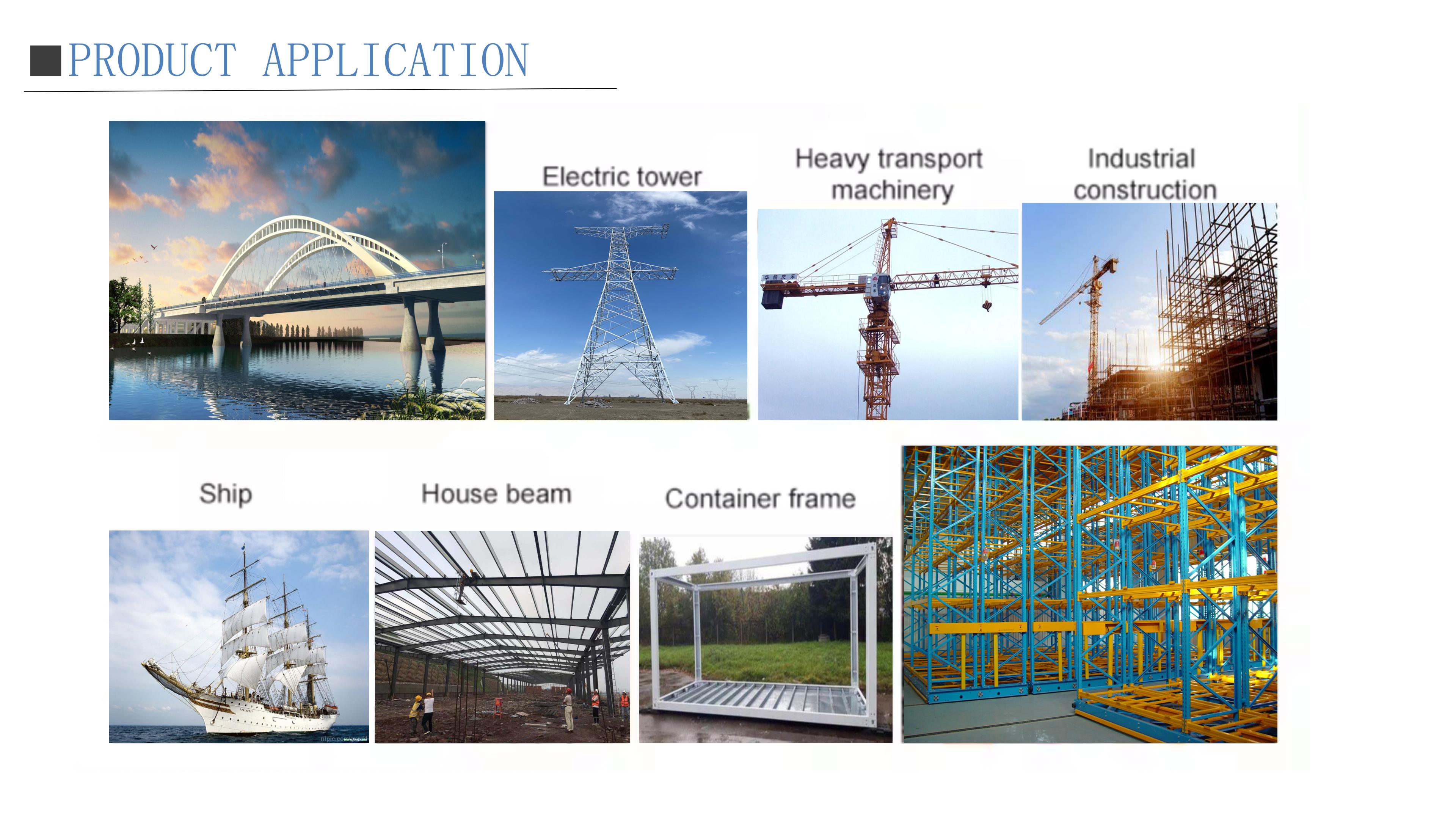
Packaging & Shipping
The packaging of angle steel bars is an important consideration to ensure their safe transportation and handling. Typically, angle steel bars are packaged in a way that protects them from damage during shipping and storage. Common packaging methods for angle steel bars include:
Bundling: Angle steel bars are often bundled together using steel straps or wires to secure them in place. This helps prevent the bars from shifting or becoming damaged during transit.
Protective Covering: Angle steel bars may be wrapped in protective material such as plastic or paper to shield them from moisture, dirt, and other contaminants.
Wooden Crates or Skids: For added protection, angle steel bars may be packaged in wooden crates or skids. This provides a sturdy and stable base for transportation and prevents the bars from being damaged by rough handling.
Labeling: Proper labeling of the packages with important information such as dimensions, weight, grade of steel, and handling instructions is essential for easy identification and safe handling.
Securing for Transport: Angle steel bars should be securely positioned within the packaging to prevent movement and potential damage during transportation.
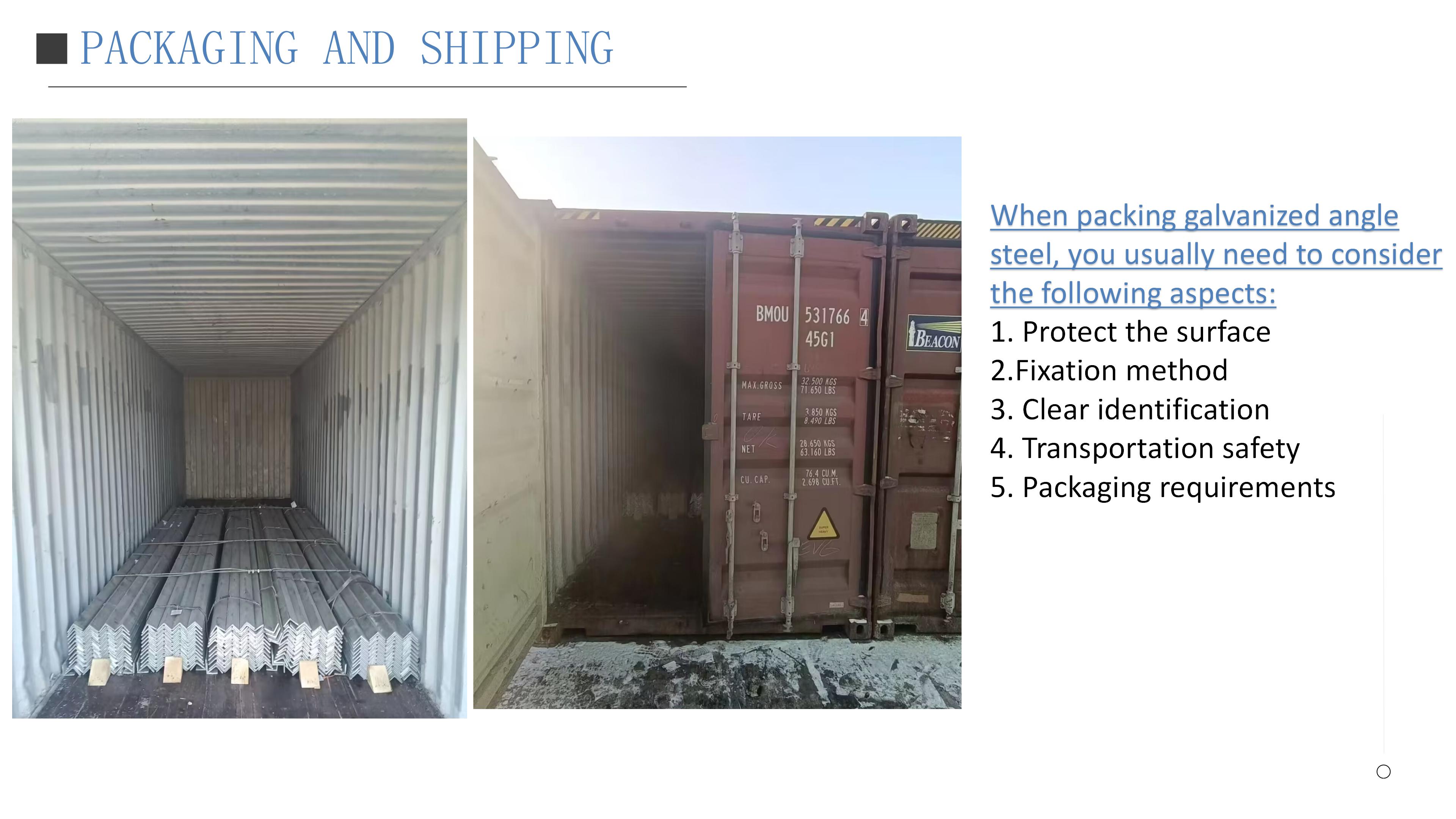
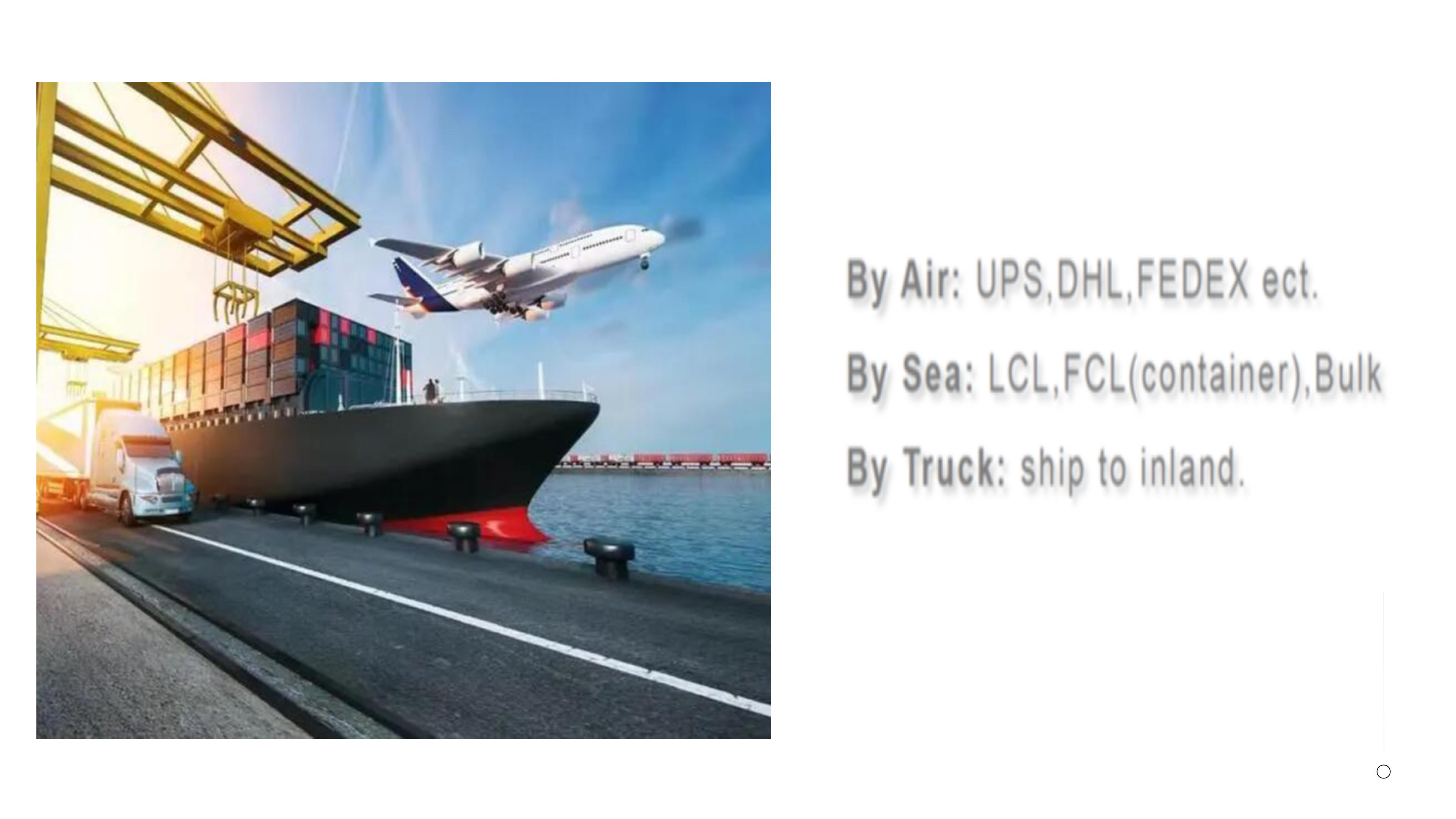
CUSTOMERS VISIT
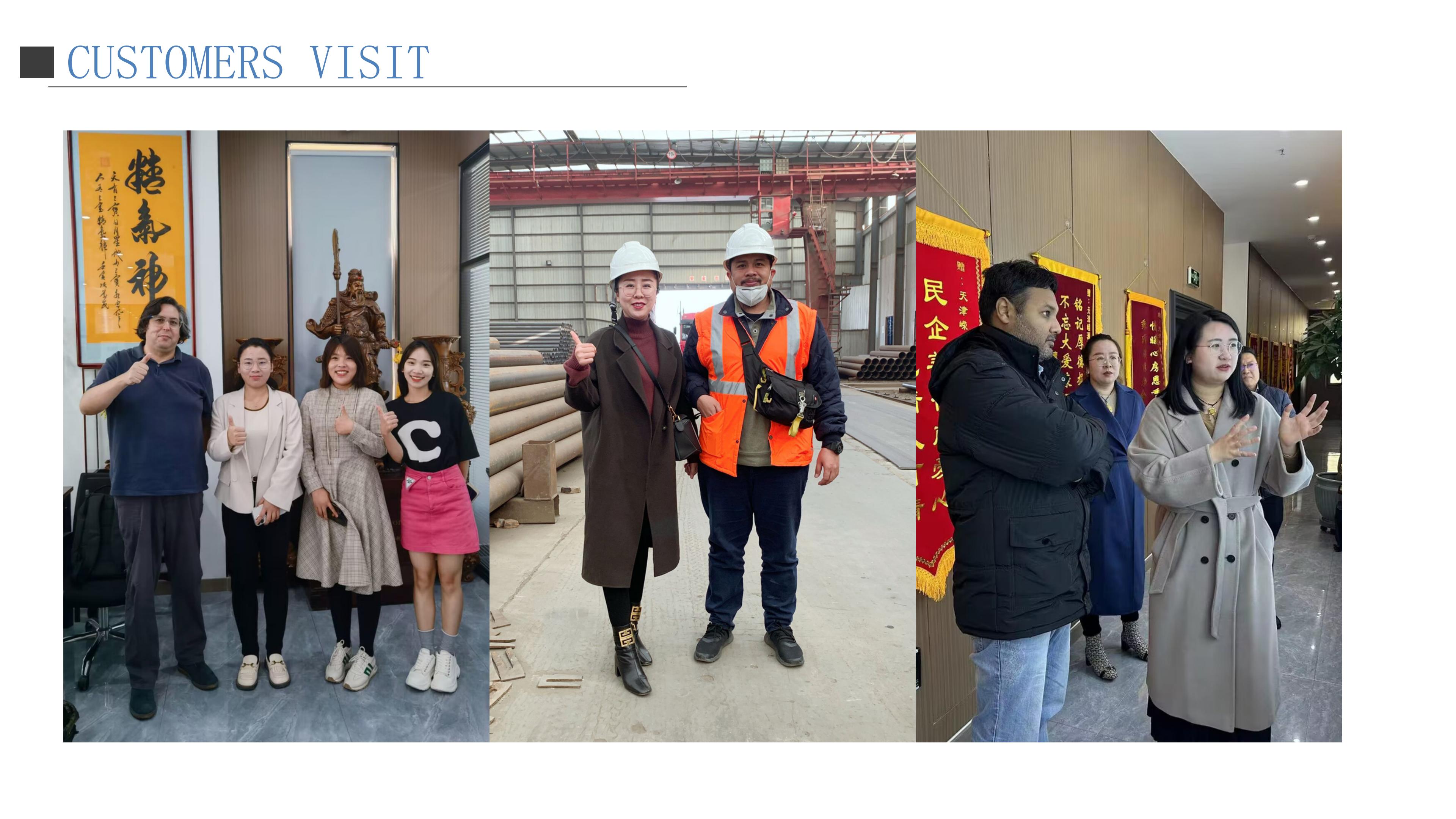
FAQ
1.How can I get a quotation from you ?
You can leave us message, and we will reply every message in time.
2.Will you delivery the goods on time?
Yes,we promise to provide best quality products and delivery on time. Honesty is our company's tenet.
3.Can I get samples before order ?
Yes, of course. Usually our samples are free,we can produce by your samples or technical drawings.
4.What is your payment terms?
Our usual payment term is 30% deposit, and rest against B/L. EXW, FOB,CFR, CIF.
5.Do you accept the third party inspection?
Yes absolutely we accept.
6.How do we trust your company?
We specialise in steel business for years as golden supplier, headquarter locates in Tianjin province, welcome to investigate in any ways, by all means.








